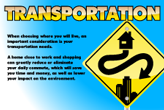- Home
- Comics
- Green Blog
-
Resources
Other Resources
-
Connect
Living Within A Budget
![]()
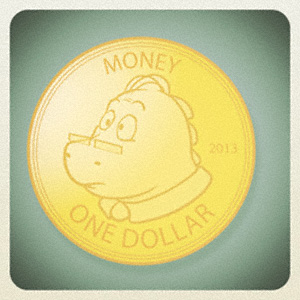 I get asked all the time how we can manage a family of six on a single income. Knowing where your money is going is key, and most people don’t have a clue how much money they actually spend and on what. As a matter of fact, what I hear so much of the time is, “I make great money, but I never seem to have any.” My secret is working with a budget.
I get asked all the time how we can manage a family of six on a single income. Knowing where your money is going is key, and most people don’t have a clue how much money they actually spend and on what. As a matter of fact, what I hear so much of the time is, “I make great money, but I never seem to have any.” My secret is working with a budget.
A budget will only work if you record all your expenditures. Get a book that you can use to keep your budget in. Write down every single thing you have to spend money on and give it a category in your budget. This takes time, because there are lots of items that you probably don’t take into account because they’re only a couple of bucks here, and a couple of bucks there, but it is the accumulation of all those small expenditures that will blow a paycheque faster than anything. Make sure you account for everything that you buy or that needs to be paid. (You can use this printable list to help you.)
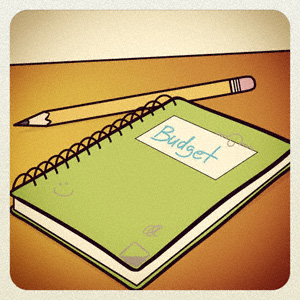 Most people people spend the majority of their "extra" money on entertainment, (often dipping into money that isn't "extra") or on impulse shopping. Never buy anything with a credit card that isn’t an absolute necessity if you cannot pay the credit card off completely when the bill comes in. Buying on credit means that you are devoting up to an extra 21% of the purchase price to the bill. Even if you got it on sale, it doesn’t take much for the interest charges to eat up any advantage of the lower price.
Most people people spend the majority of their "extra" money on entertainment, (often dipping into money that isn't "extra") or on impulse shopping. Never buy anything with a credit card that isn’t an absolute necessity if you cannot pay the credit card off completely when the bill comes in. Buying on credit means that you are devoting up to an extra 21% of the purchase price to the bill. Even if you got it on sale, it doesn’t take much for the interest charges to eat up any advantage of the lower price.
Entertainment needs an assigned position in your budget with a set amount of money per cheque that you think is reasonable given how much extra money you really have. (Entertainment money
should be for things you do as a couple or family.) Put this money in a jar and take it out and pay cash for things like renting movies, going for coffee or drinks, picking up pizza for supper or going to a restaurant, or even going out for ice cream. After you’ve assigned the money you need to pay all the other things that are necessities, you may find that your entertainment budget is much smaller than what you’ve been used to spending.
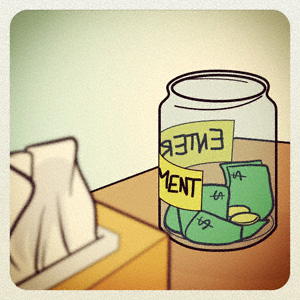 The idea is for your entertainment spending to be very visual. If there isn't any money left in the jar, you'll have to find alternate means of entertainment to live within your budget. (You may be pulling out the cards and making popcorn on a Friday night instead of going out.) If you have money left over, that's ok too... maybe you'll need the extra for a special occasion later on. You may also find that when the money in the jar is visual, you’re much more careful on how you spend it.
The idea is for your entertainment spending to be very visual. If there isn't any money left in the jar, you'll have to find alternate means of entertainment to live within your budget. (You may be pulling out the cards and making popcorn on a Friday night instead of going out.) If you have money left over, that's ok too... maybe you'll need the extra for a special occasion later on. You may also find that when the money in the jar is visual, you’re much more careful on how you spend it.
Set up a savings account that is accessible through your banking machine for large items that you want to save for. ( We have two savings accounts... one for vacations and one we’re saving towards replacing our older refrigerator with an energy efficient one.) On your budget, assign a certain amount to go towards those things you are saving for and each pay period, automatically transfer that amount over like a bill. It doesn’t take long to accumulate the money you need, even if it’s just a small amount you are depositing each cheque. Consistency adds up.
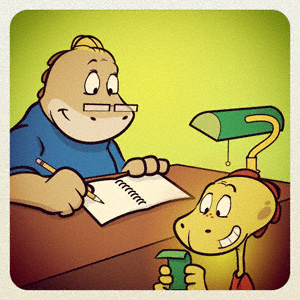 Build an allowance for yourself and each member of your family into your budget. Assign a reasonable amount of money that will give you pocket money, but does not fall under some other category. Each
Build an allowance for yourself and each member of your family into your budget. Assign a reasonable amount of money that will give you pocket money, but does not fall under some other category. Each
person's allowance should be for the extra things that they may want to choose to buy without having to justify it with anyone else. If you have a lot of arguments about clothing purchases, you may want to add a monthly clothing allowance to each person’s personal budget and then take it out of the family budget.
Decide what things are part of the family budget, and what things should come out of your personal allowance. For example, taking a homebuilt lunch can come out of the grocery money, but buying a lunch must come out of your allowance. Taking the bus can be part of the transportation budget, but if you choose to take a taxi or drive (parking fees) to work it must come out of your allowance.
Allowance should not have to cover the necessities, it is for personal spending of the little things you would like to choose to buy that you do not already have built into your budget. (Like lottery tickets, buying a book or clothes that you don’t need but want.)
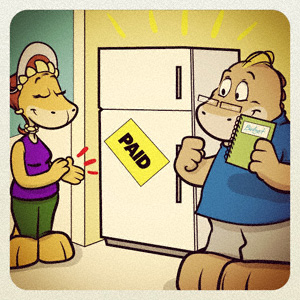 You may find that after you have made note of everything that you want to be on your budget, that you don’t have enough income to pay for it all. At this point in time, you will have to go over everything as it is written in front of you and make adjustments. Maybe you can’t afford to give yourself that $500 allowance after all. Maybe you’ll have to cut down or cancel your cable. Cancel some subscriptions, or club memberships. Maybe you simply cannot afford to have a vehicle. Maybe your trips to the laundromat are killing you and you need to purchase a portable second hand washing machine and some rope.
You may find that after you have made note of everything that you want to be on your budget, that you don’t have enough income to pay for it all. At this point in time, you will have to go over everything as it is written in front of you and make adjustments. Maybe you can’t afford to give yourself that $500 allowance after all. Maybe you’ll have to cut down or cancel your cable. Cancel some subscriptions, or club memberships. Maybe you simply cannot afford to have a vehicle. Maybe your trips to the laundromat are killing you and you need to purchase a portable second hand washing machine and some rope.
Do your bills BEFORE payday. In other words, get everything together, assign the amounts you will be paying to each bill, write out the cheques if that’s how you’re paying, address the envelopes and lick the stamps. Make note of any miscellaneous extra spending that is coming up, like for presents, a child’s upcoming field trip or company (extra groceries) coming to town.
The point is that by actually making a budget, you can plan your spending ahead of time so that you will have made better decisions on how you use your money rather than just blowing your cheque on impulse.
If you want an easy way of planning out your spending so that you see at a glance how much money you have spent or have left to spent, you could try an electronic budget. For instance, there is an highly recommended app called “My Weekly Budget” that allows you to customize your budget and deduct all your spending as you spend. It tells you how much money you have left and how many more days it’s got to last so it keeps you on track right from your smartphone. It’s available for iPhone or Android users and there is a free version as well as a paid “no ads” version.
Blog Group:
Green Ideas






